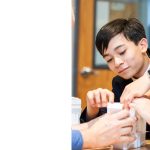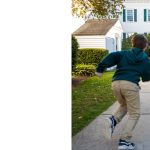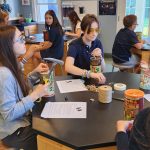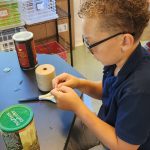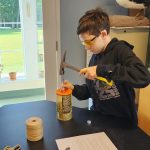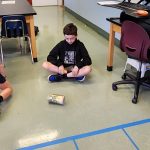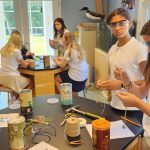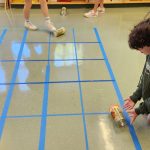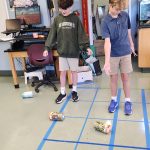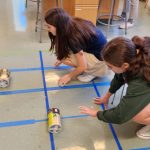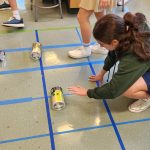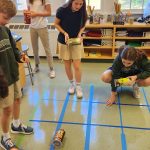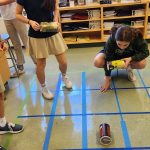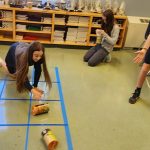The Comeback Can
Posted by Joshua Bartosiewicz- Building the Comeback Can.
- Tying weights around a rubber band for the inside of the can.
- Making holes on either side of the can for the rubber band and paperclip to fit through.
- Testing out their design.
- Tweaking their weights in the can as well as their designs.
- Comparing their cans “rollback” capabilities.
- Racing their cans.
- Can race.
- Everyone comparing their success.
Eighth Grade kicked off the school year learning about the very basics of Physics; more specifically, energy, energy transfer (when energy starts as one type and stays the same type through the entire system) and energy transformation (when energy starts as one type in the system but then converts to a different type). Our students started learning specifically about all of the different types of energy such as potential energy (stored energy), kinetic energy (energy associated with movement), gravitational potential energy (energy from the pull of gravity), elastic potential energy (energy from stretching or compressing objects such as a spring or rubber band), thermal energy (heat), sound energy, light energy, electromagnetic energy (electricity and magnetism), electrical energy, chemical energy (energy associated with digestion or energy stored in batteries) and nuclear energy.
In this lab, students built a contraption referred to as a “rollback” can or a “comeback” can. Students were given the following supplies; an empty coffee can, rubber band, metal washers/nuts, paperclips, tape and string. The goal was to build the can properly so that when you roll the can, it would come back to the student, almost like a boomerang.
First students poked holes on both sides of the can (lid and bottom). Next, the students tied metal washers/nuts to the center of their rubber-band. The metal washers/nuts are used as a weight in this experiment. Once the weights have been tied to the rubber bands (using the string), the students then attached 2 paperclips to the rubber-band (one on each end). After the paperclips were attached, the scholars had to feed the paperclips through the holes in the top and bottom of the coffee can. Students were allowed to use tape to secure the paperclips to the bottom and top of the can so they don’t slip inside of the can (which would hinder the experiment from working properly). Finally after everything has been put together, the students would simply roll the can on the floor; if they built it correctly the can will stop rolling away when the kinetic energy has transformed into elastic potential energy and then the rubber-band will unwind, converting all of the elastic potential energy back into kinetic energy, therefore the can rolls back to its starting position.
In the end, students witnessed energy transfer and transformation in this lab which really helped them to decipher where the energy transfer and transformation occurs.
← A Day of Empowerment & Team Bonding! Culture Time, aka Fun Friday! →




